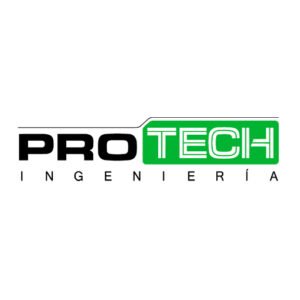Data capture and recording is one of the fundamental pillars of operational efficiency in any modern organization. Regardless of the industry, collecting accurate and timely information is essential for making informed decisions, meeting legal requirements, and enhancing business competitiveness.
Today, companies face the challenge of managing an increasing volume of data from various sources: customers, internal processes, suppliers, digital channels, IoT devices, and more. In this context, having an efficient data capture and recording system is no longer optional—it's a requirement for digital transformation.
This article provides a comprehensive guide on what data capture is, how it is carried out, what its benefits are, and—most importantly—why your company should optimize this process as soon as possible.
What is Data Capture and Recording?
Data capture and recording is the process of extracting, converting, and organizing information from various sources (physical or digital documents, systems, sensors, forms, etc.) to integrate it into a structured and accessible database.
This information can be used for:
- Decision-making
- Indicator analysis
- Report generation
- Process Automation
For example, a company can capture data from invoices, surveys, customer records, web forms, or logistics sensors to feed into its ERP or CRM system, providing a more accurate view of its operations. The ability to integrate multiple sources and consolidate information in real time is a key advantage in competitive and fast-paced environments.
How Is Data Capture and Recording Carried Out?
The process can be divided into the following stages:
1. Identification of Relevant Information
Determine which data is necessary for operations, regulatory compliance, or strategic analysis. This step helps set priorities and define data quality standards.
2. Location of Data Sources
Data may come from internal sources (forms, legacy systems, archived documents) or external ones (web portals, social media, APIs, sensors). Proper identification of sources allows for a more efficient and adaptable process design.
3. Extraction and Capture
Information can be collected manually or through automation tools such as:
- OCR (Optical Character Recognition)
- ICR (Intelligent Character Recognition)
- IDP (Intelligent Document Processing)
- Digital forms with validation features
These methods help standardize and accelerate the capture of large volumes of information.
4. Data Entry and Validation
The captured data is entered into information systems, where it is classified, validated, normalized, and stored. Automated validation helps detect inconsistencies and improves data integrity.
5. Secure Storage and Structured Access
Captured data must be stored in digital repositories, ensuring its security, availability, and traceability. This includes backup management, access policies, and auditing controls.
What Are the Types of Data Capture?
-
Manual Capture
This method involves operators entering information into systems. It is common in companies that work with physical documents. Although simple, it is slow, costly, and prone to human error. It requires ongoing training and supervision to avoid inconsistencies.
-
Automated Capture
This method uses technologies to extract data without direct human intervention. Its advantages are clear:
- Error reduction
- Shorter processing times
- Greater security
- Scalability
- Less dependence on human input
Automation also allows data integration in real time from multiple channels, which improves the agility of business processes.

6 Reasons to Optimize Data Capture and Registration in Your Company
Data capture and recording has revolutionized the way companies manage their information. Through the use of technological tools, it is now possible to read and extract data directly from various types of documents or files with greater speed and accuracy. Technologies such as Optical Character Recognition (OCR) make it possible to obtain text from digitized documents, eliminating manual processes and significantly reducing the margin of error.
Thanks to advances in artificial intelligence (AI), more advanced solutions now exist, such as ICR (Intelligent Character Recognition), which can even interpret handwritten text. These automated tools not only enhance operational efficiency but also provide higher-quality information for strategic decision-making.
Here are six key reasons why your company should optimize its data capture and recording processes as soon as possible:
1. Improves Data Quality
Optimizing data capture results in more accurate, consistent, and error-free information. This enables better-informed decision-making and reduces rework. It also enhances the reliability of internal reports and improves interactions with customers and partners.
2. Increases Operational Efficiency
Automated processes reduce data entry time, allowing staff to focus on higher-value tasks. This leads to greater organizational productivity and more effective management of human and technological resources.
3. Facilitates Regulatory Compliance
Regulations such as GDPR, ISO 27001, or industry-specific standards require traceability and data security. Proper data capture ensures compliance with these standards, reducing legal risks and improving the company’s reputation.
4. Enhances Customer Experience
Having complete and accurate information in real time enables fast, personalized, and error-free responses. This boosts customer satisfaction and strengthens brand loyalty.
5. Drives Strategic Decision-Making
Data analytics depends on the quality of the initial input. When captured data is reliable, the resulting analyses and reports are more useful. This allows the company to anticipate trends, optimize processes, and build sustainable competitive advantages.
6. Reduces Operational Costs
Effective data capture prevents duplicate tasks, costly errors, and administrative rework, lowering expenses in the medium and long term. It also supports better financial planning and greater control over internal processes.
Key Tools for Data Capture and Recording
OCR – Optical Character Recognition
OCR is a technology used to identify printed characters and convert them into digital data. It enables the extraction of text from scanned documents or PDF files, making it highly useful for processing large volumes of data capture and recording.
ICR – Intelligent Character Recognition
ICR goes a step beyond OCR by being able to interpret handwritten text. It is especially valuable for extracting information from hand-filled forms. This technology represents a modern evolution of OCR, enabling the capture and recording of complex data with greater flexibility and accuracy.
IDP – Intelligent Document Processing
IDP combines technologies such as AI, Natural Language Processing, and OCR. Its ability to recognize patterns in large data sets allows it to classify content and verify accuracy. It is widely used in organizations that handle documents like invoices or supplier contracts, enabling intelligent and automated data capture and recording.
OMR – Optical Mark Recognition
OMR is used to capture and record data from marked forms such as surveys, ballots, or exams. It detects the marked checkboxes and stores that information in a digital database.
Barcodes and QR Codes
Reading barcodes allows the transformation of visual data into digital records. There are 1D barcodes, commonly used in retail and healthcare, and 2D or QR codes, often used in marketing campaigns or packaging to link documents or websites—enabling fast and efficient data capture and recording.
RFID – Radio Frequency Identification
RFID uses radio waves to transmit data from tags attached to products. It is commonly used in logistics and retail sectors to monitor inventory or track items, supporting real-time data capture and recording processes.
Why Automate Data Capture and Recording?
Automation in data capture and recording is a decisive step toward operational efficiency and the digital transformation of any company. In a business environment where speed, accuracy, and responsiveness are critical factors, moving away from manual processes allows organizations to better adapt to today’s market challenges. Implementing automated data capture technologies not only improves the quality of collected information, but also reduces errors, optimizes resources, and strengthens strategic decision-making. Here are the main reasons your company should move toward automating this key process:
- Improves the accuracy of information
- Increases processing speed
- Minimizes the margin for human error
- Facilitates integration with other systems
- Provides real-time information for decision-making
Data capture and recording is the starting point for any business intelligence strategy, process automation, or organizational efficiency improvement. Investing in the right technologies and methodologies not only boosts productivity but also strengthens your company’s competitiveness and long-term sustainability.
With optimized capture processes, organizations can respond more swiftly to changing environments, adapt to new market demands, and build a solid foundation for future innovation.
At Protech Ingeniería SAS, we offer the technological solutions, expertise, and experience to support you in modernizing your processes.
Contact Us Now!
And discover how optimizing data capture and recording can transform your organization!








